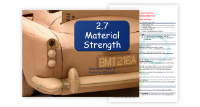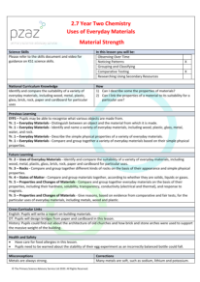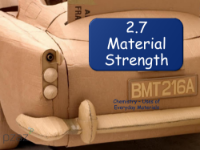Material Strength - Teacher Explanation

Science Resource Description
Welcome to Lesson 2.7 on Material Strength, an integral part of the Year 2 curriculum on the Uses of Everyday Materials. In line with the National Curriculum, this lesson aims to help pupils identify and compare the suitability of various everyday materials such as wood, metal, plastic, glass, brick, rock, paper, and cardboard, and understand their applications. It's important to note that this lesson involves a practical experiment with eggs, so teachers should be mindful of any food allergies among the students and ensure stability during the experiment to maintain safety. The lesson extends beyond the basic curriculum by incorporating a cross-curricular approach where pupils will draft a scientific report on building materials, design bridges, and research the architecture of old churches, focusing on the structural importance of the stone arch.
The experiment, cheekily named 'eggsperiment', is designed to demonstrate the surprising strength of eggs and introduce the concept of the parabola—a shape prevalent in engineering and architecture, particularly in bridges and arches. For this hands-on activity, students will need a variety of materials including eggs, markers, spoons, and water bottles to use as weights, since one millilitre of water conveniently weighs one gram. The lesson will guide the pupils through the process of preparing the eggs and testing their strength under the weight of books and water bottles. Following the egg experiment, students will explore the relative strengths of cardboard and paper by constructing bridges and testing their load-bearing capacity using coins. The lesson concludes with a research task where students investigate the materials used in famous structures and the properties that make them suitable for construction. This comprehensive lesson not only teaches material strength but also encourages practical application and critical thinking.





